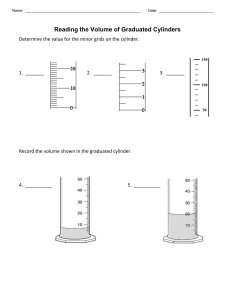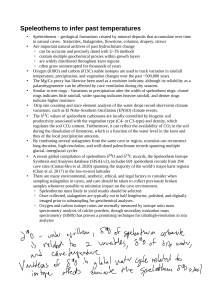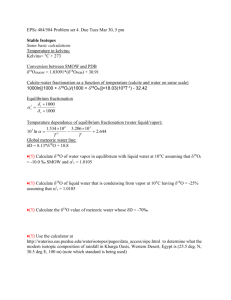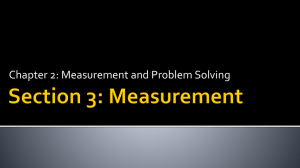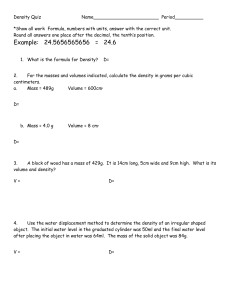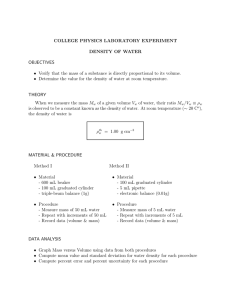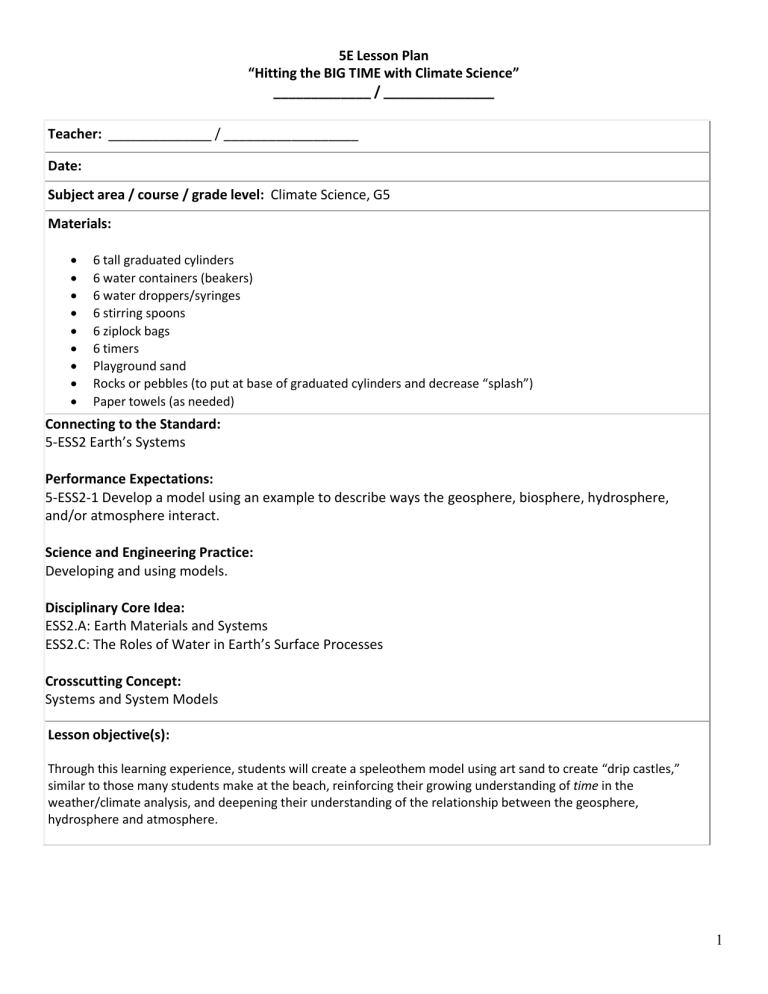
5E Lesson Plan “Hitting the BIG TIME with Climate Science” _____________ / _______________ Teacher: ______________ / __________________ Date: Subject area / course / grade level: Climate Science, G5 Materials: 6 tall graduated cylinders 6 water containers (beakers) 6 water droppers/syringes 6 stirring spoons 6 ziplock bags 6 timers Playground sand Rocks or pebbles (to put at base of graduated cylinders and decrease “splash”) Paper towels (as needed) Connecting to the Standard: 5-ESS2 Earth’s Systems Performance Expectations: 5-ESS2-1 Develop a model using an example to describe ways the geosphere, biosphere, hydrosphere, and/or atmosphere interact. Science and Engineering Practice: Developing and using models. Disciplinary Core Idea: ESS2.A: Earth Materials and Systems ESS2.C: The Roles of Water in Earth’s Surface Processes Crosscutting Concept: Systems and System Models Lesson objective(s): NGSS Table: 5-ESS2 Earths Systems. http://www.nextgenscience.org/5ess2-earth-systems Through this learning experience, students will create a speleothem model using art sand to create “drip castles,” similar to those many students make at the beach, reinforcing their growing understanding of time in the weather/climate analysis, and deepening their understanding of the relationship between the geosphere, hydrosphere and atmosphere. 1 5E Lesson Plan “Hitting the BIG TIME with Climate Science” _____________ / _______________ Differentiation strategies to meet diverse learner needs: Flexible grouping. Students are divided into 6 groups of 3-4 students for this learning experience. Scaffold writing support as appropriate. ENGAGEMENT Give students a formative mini-assessment regarding their understanding of weather and climate and introduction to speleothems (see, lab sheets). Give students 3-5 minutes of free play in their groups with instruction for the group to work together and create the tallest drip castle (see, lab sheets). 4-6 minute discussion regarding how the drip castles were formed. Identify successes for each group and the primary variable (see, lab sheets). 2 EXPLORATION • • • 5E Lesson Plan “Hitting the BIG TIME with Climate Science” _____________ / _______________ Re-direct attention to front for mini-lesson on formation of speleothems as a climate proxy. http://www.esi.utexas.edu/outreach/caves/infosheets/CoolFormations.pdf http://www.nps.gov/grba/naturescience/speleothems-cave-formations.htm Tell students they will be creating a multi-layered drip castle that represents a stalagmite. They will mix sand and water and pour the mixture for 1 minute intervals using the following steps to create the model: 1. Put 500 ml of pebbles or rocks in base of cylinder. 2. “Stuff” paper towels into your graduated cylinder (atop pebbles) and form a semi-flat surface. The paper towels will act as a sponge and filter so that the speleothem can grow. 3. Measure the top of your paper towels and record it . 4. Cut a very small hole in one corner of your ziplock bag. Place the bag on the graduated cylinder with the cut end down inside the cylinder. You will use this as a sort of funnel that will resemble the point at which the groundwater enters your cave. 5. In a 100ml beaker, mix 40 ml of sand with 20 ml of water . 6. Once mixed, start your timer and pour the mixture into to your ziplock bag so it drips through and lands on the paper towel. 7. At the end of one minute, record the net growth of your speleothem model in the chart on the next page and describe it. 8. Flatten the sand between trials and repeat this process to increase reliability and validity of results. importantly, this is where the variable comes in: • You should vary the simulated rainfall by adding 5ml of water or 10 ml of water to different trials. 9. Record the variables along with changes in growth (total height vs. net growth) of your speleothem during each period as indicated on the chart provided. Once groups have formulated a plan for rain events for each of the 5-time intervals, have each group develop a hypothesis regarding the periods that will have the most speleothem growth. Scaffold as necessary: “Based on we expect (periods) will experience the most growth because ” EXPLANATION Each group compares results to their hypothesis (group discussion). Each groups shares results, recorded by teacher on the board (class share). ELABORATION or EXTENSION Have students identify questions they have related to the speleothem model. Have students identify other things that could be studied to help develop climate models in Texas. Have students identify other things that could be studied to help develop climate models anywhere in the world. Field trip! EVALUATION Formative: Scientific conclusion (see, lab sheets) Comprehensive: “Using the sun as a starting point, draw, label and explain the formation of a speleothem, using all relevant concepts we have covered this year.” 3
